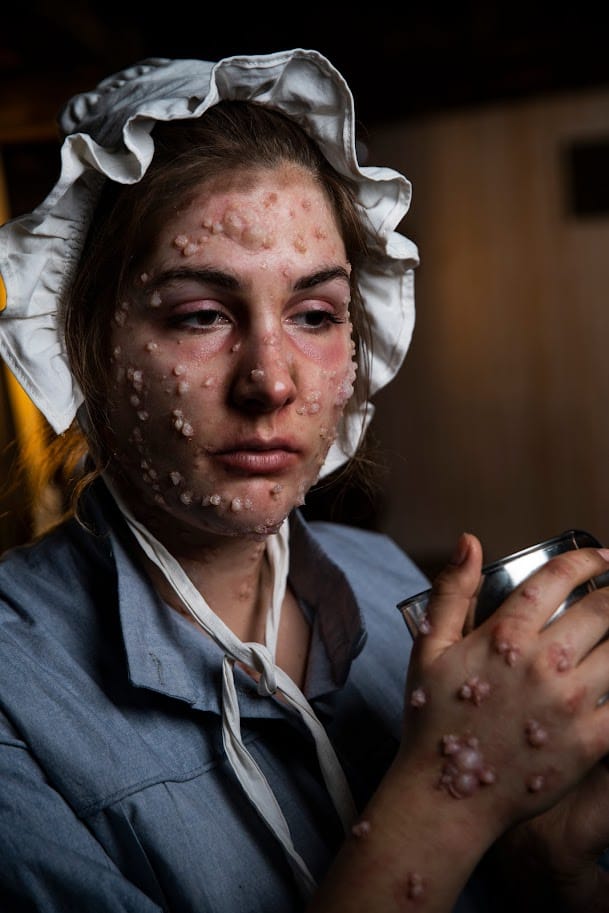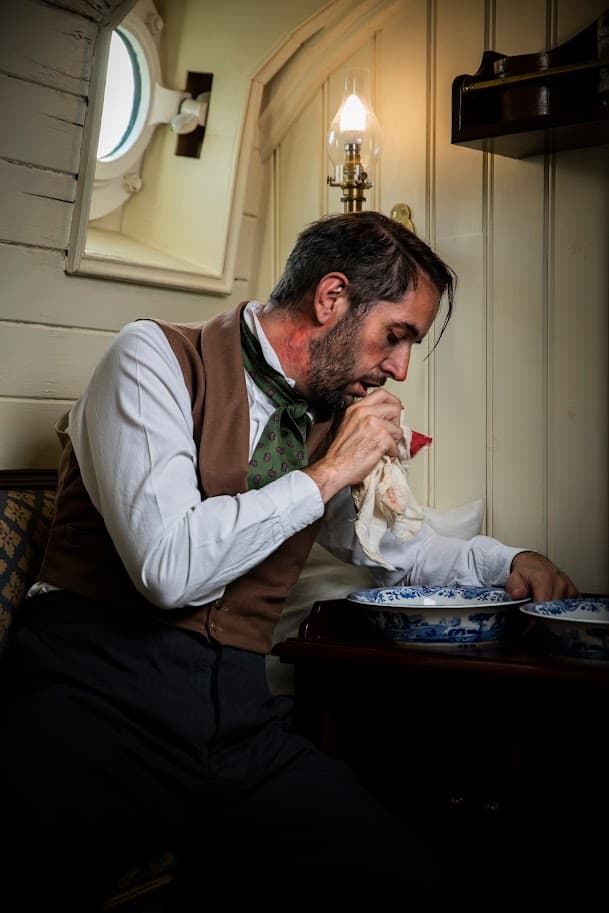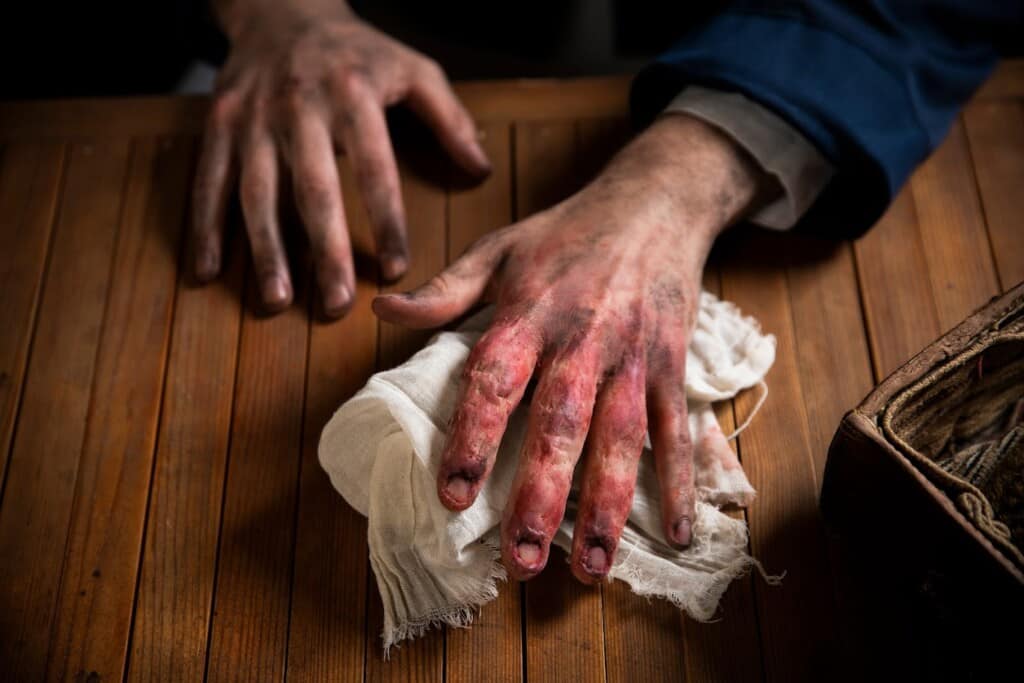WARNING: Contains images which some may find upsetting
With so many people living in a confined space, it’s unsurprising that injuries and illnesses were commonplace. The Captain and crew worked hard to run the ship safely and maintain good hygiene. As a result, the Great Britain had an excellent reputation for being a healthy ship. Nevertheless, 140 deaths were recorded in her log books and in the diaries of the passengers and crew. The causes of death range from falling overboard to teething, and include many serious diseases and infections.
Read on to see some of the injuries and illnesses which people suffered on board the Great Britain recreated by make up artists.
MEASLES
This highly contagious disease is caused by the measles virus, which spreads easily through coughs and sneezes. Measles was a common disease in the 1800s and there were several passengers who travelled on the Great Britain who mentioned cases of measles in their shipboard diaries.
Symptoms
Symptoms usually appear about 10 days after infection, beginning with a fever and white spots inside the mouth. A red rash will develop a few days later, usually starting on the face before spreading to the rest of the body. Incidents on Board
There were two confirmed deaths from measles during 1861. on board. Sadly, both victims were children aged just 14 months
19th Century treatment
The fever may be treated like other fevers: perspiration should be prompted by sponging with either warm or cold water as the patient may desire. However, care should be taken to prevent the patient from catching a cold. Let them diet and keep their bowels regular with calomel or rhubarb. If pains should appear in the body they may be relieved by mustard poultices. The Seaman’s Medical Guide: A Treatise on Various Diseases, 1851.
Evidence from the past
“In the evening about 10 p.m. their was a young girl taken from the 3rd cabin to our Hospital, and we are all afraid it will turn out to be fever or small Pox, it turned out to be the measles.”
-Diary of John McLennan, 28th December 1867








